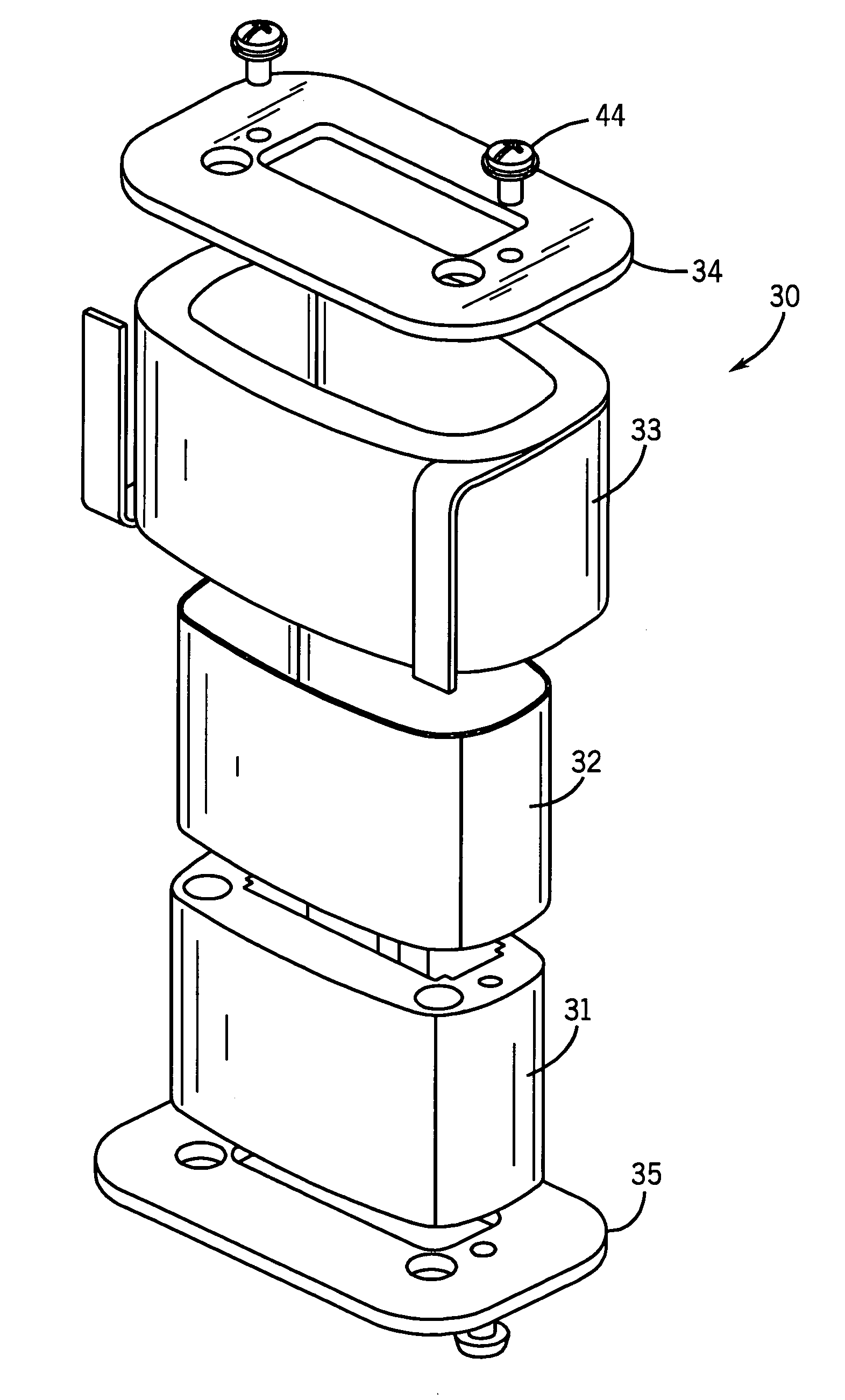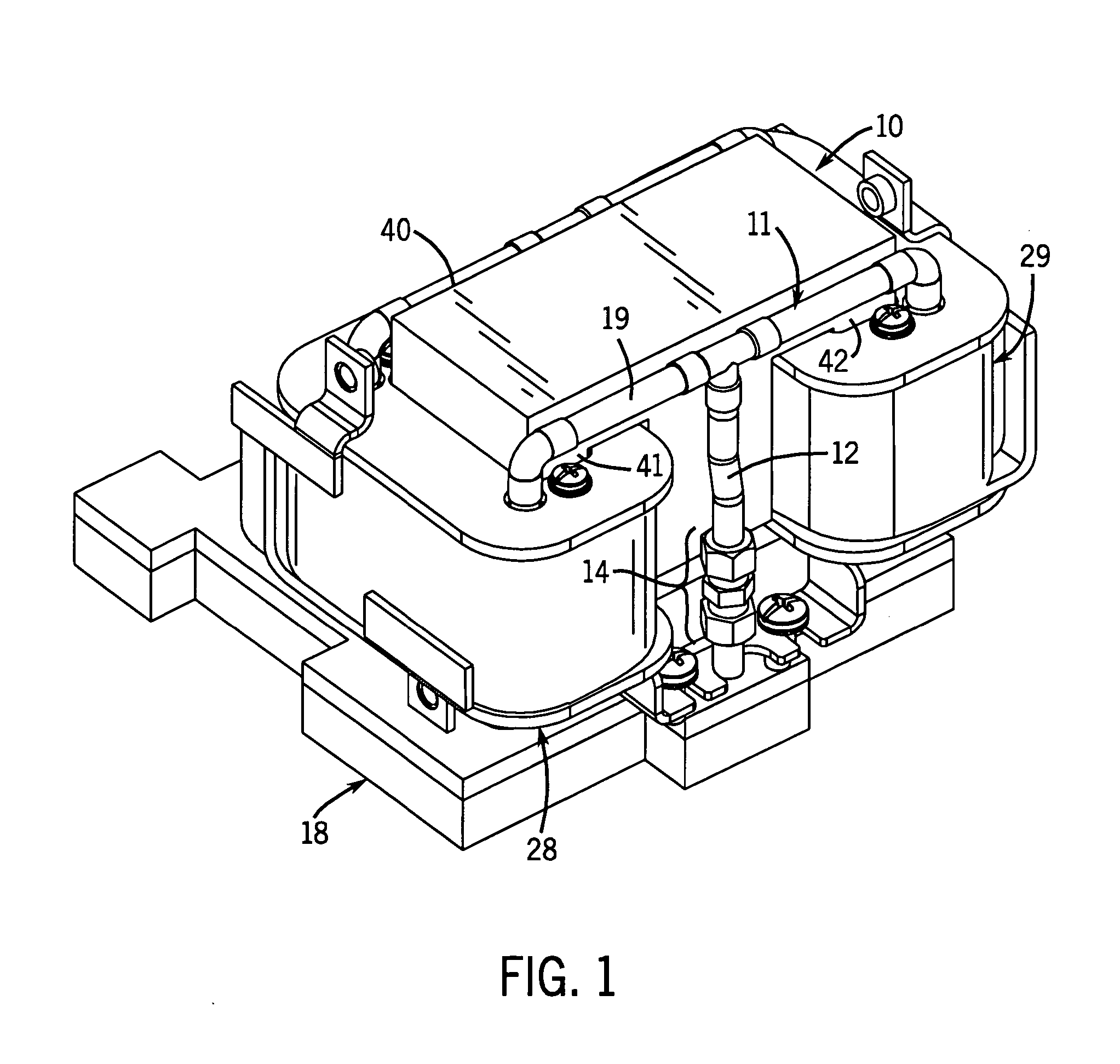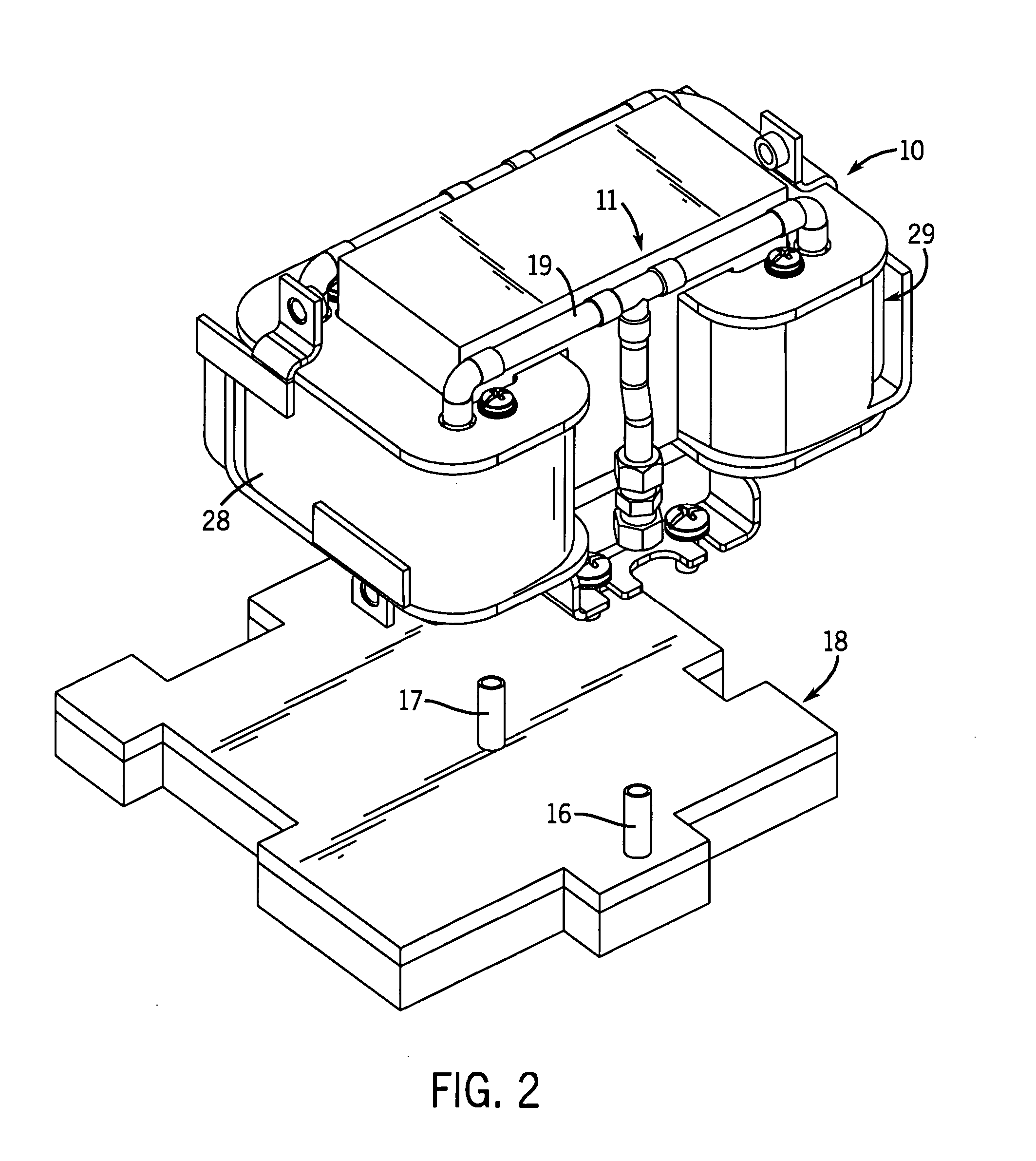Core cooling for electrical components
a technology of cooling system and electrical components, applied in the direction of transformer/inductance cooling, electrical apparatus construction details, transformer/react mounting/support/suspension, etc., can solve the problems of large component size, significant weight, and inefficient air-cooled inductors, so as to reduce heating, reduce electrical losses, and reduce internal temperature
- Summary
- Abstract
- Description
- Claims
- Application Information
AI Technical Summary
Benefits of technology
Problems solved by technology
Method used
Image
Examples
Embodiment Construction
[0041]FIG. 1 illustrates an inductor assembly 10, which is a choke coil assembly, and which is constructed according to the present invention. The choke coil assembly 10 has a conduit assembly 11 for circulating a cooling fluid. As seen in FIGS. 1-3, the conduit assembly 11 is connected by vertical feed conduits 12 and 13 and couplings 14, 15 to conduit stubs 16, 17 in a cooling base plate 18. This base plate 18 has hollow portions for conveying the cooling fluid into and out of the conduit assembly 11 associated with the choke coil assembly 10. As seen in FIG. 1-3, the conduit assembly 11 forms a loop in three planes with two horizontal transverse runs 19, 20 across the top, four vertical runs 21, 22, 23 and 24 through the coil assemblies 28, 29 and two horizontal front-to-back runs 25 and 26 across the bottom which run at right angles to the top transverse runs 19 and 20.
[0042] The conduit assembly 11 is referred to as a “pass-through” type of conduit assembly because its conduit...
PUM
| Property | Measurement | Unit |
|---|---|---|
| conductive | aaaaa | aaaaa |
| dielectric | aaaaa | aaaaa |
| symmetry | aaaaa | aaaaa |
Abstract
Description
Claims
Application Information
 Login to View More
Login to View More - R&D
- Intellectual Property
- Life Sciences
- Materials
- Tech Scout
- Unparalleled Data Quality
- Higher Quality Content
- 60% Fewer Hallucinations
Browse by: Latest US Patents, China's latest patents, Technical Efficacy Thesaurus, Application Domain, Technology Topic, Popular Technical Reports.
© 2025 PatSnap. All rights reserved.Legal|Privacy policy|Modern Slavery Act Transparency Statement|Sitemap|About US| Contact US: help@patsnap.com



